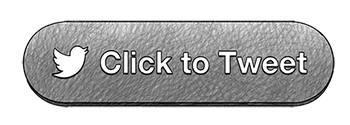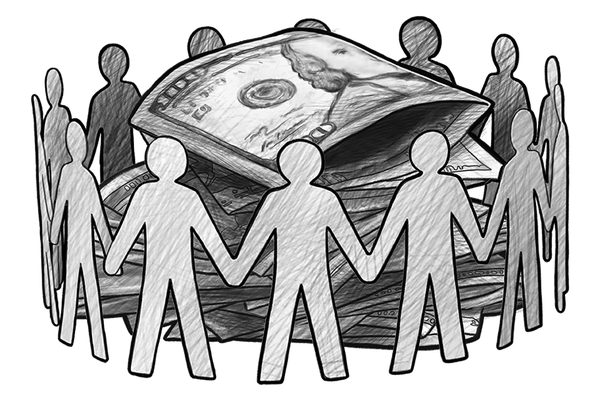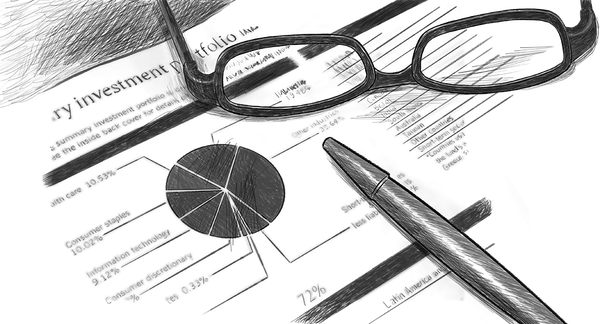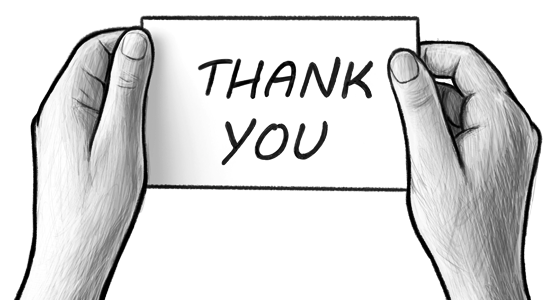Will the U.S. Default?
19 January 2023

Hi, The Investor’s Podcast Network Community!
With interest rates jumping, renting is suddenly a lot more affordable (comparatively) in the U.S. In 95% of counties late last year, renting a three-bedroom home consumed a smaller share of wages than owning one.
That’s a big shift from 2021 when owning a home was cheaper in 60% of counties 💬
Elsewhere, earnings season continues on: the large aluminum producer Alcoa (AA) plummeted over 7% after reporting a big drop in revenue due to lower prices — less demand for base metals in a global economic slowdown.
Discover Financial (DFS) dropped this morning but rallied throughout the day despite indicating that its customers are increasingly falling behind on loans and credit card payments.
🛒 And the consumer-goods giant Procter & Gamble (PG) saw its shares flounder, too, after reporting that rising costs, particularly for its Tide detergent and other staples, had hurt sales volumes.
We also got some late breaking news that Netflix’s (NFLX) CEO and co-founder, Reed Hastings, is stepping down after 25 years.
Here’s the market rundown:
MARKETS
*All prices as of market close at 4pm EST
Today, we’ll discuss two items in the news: the U.S. hits its debt limit, and why Chile’s wealthy are fleeing, plus our main story on Disney, Bob Iger’s return, and boomerang CEOs.
All this, and more, in just 5 minutes to read.
Get smarter about valuing businesses in just a few minutes each week.
Get the weekly email that makes understanding intrinsic value
easy and enjoyable, for free.
IN THE NEWS
- Latin America’s standout economy for nearly 50 years and a Wall Street darling, Chile, now faces an existential crisis. For the country with a constitution inspired by the free markets-advocating economist Milton Friedman, pillars of this system are under attack following the election of the country’s most leftist leader in decades.
- Friedman once referred to the country’s economic turnaround after pivoting towards deregulation and privatization in the 1970s as the “miracle of Chile.”
- Now, in his words, President Gabriel Boric is pushing to “redistribute the wealth that Chileans produce.” There’s, however, some room for optimism, with Chileans in September rejecting a new constitution supported by Boric that would have further eroded checks and balances on power while boosting fiscal spending.
- The wealthy class has taken notice of the populist agenda, with investors pulling nearly $50 billion from the country since Chileans first took to the streets in 2019 to protest inequality. Consequently, the country risks becoming another troubled Latin American investment destination, joining the likes of Brazil, Mexico, and Colombia, with Argentina and Venezuela being the biggest pariahs.
- Chile faces a polycrisis of economic, social, and political issues, and capital flight only worsens these problems. One banker remarked, “Chile is suffering a huge loss of competitiveness…This means that things look cheap right now and may stay cheap for a very long time.”
- Lack of investment is dampening growth prospects, as Chile’s central bank recently lowered its economic growth forecasts to 2.1% from 2.8% for the next decade. But local companies have shown little interest in reinvesting: Chile’s 57-member IGPA index paid a record $13 billion in dividends last year and in 2021, more than double the previous two years.
- The U.S. will hit its borrowing limit today while the Treasury takes “extraordinary measures” to avoid default. But congressional Republicans and the White House are drawing battle lines in the increasingly perilous debt ceiling debate, with both sides seemingly only becoming more entrenched.
- Fighting over whether to boost Uncle Sam’s $31 trillion credit limit is a game that, to Wall Street’s horror, is played out annually in D.C. To push the deadline back on default, the Treasury will likely employ some creative accounting. However, its options are expected to be exhausted in just a few months.
- Some ideas include minting a trillion-dollar coin, issuing bonds with above-market interest rates, or bypassing the ceiling altogether by invoking the 14th amendment.
- Another solution gaining traction would prioritize payments by canceling other spending to ensure coupons on outstanding debt are paid. This would essentially sacrifice economic growth and government functioning to uphold the ‘full faith and credit’ of the United States.
- This would, however, involve the White House picking and choosing which Congressional spending items to honor, representing a constitutionally questionable power grab from Congress, which normally carries “power of the purse” over federal spending.
- It’s also notable that the U.S. is essentially the only country that requires a separate vote on raising its debt ceiling. Other governments usually assume that spending is necessary if legally authorized and the relevant funds are made available. While still unlikely, a default would ripple across financial markets, almost certainly causing panic and throwing the global economy into crisis.
What happens when the CEO comes back?
Many companies turn to their former CEOs in challenging times. Disney is no outlier.
Late last year, the mass media and entertainment conglomerate welcomed back Bob Iger, ousting Bob Chapek, who replaced Iger in 2020. Growth had slowed, and the share price had halved since its March 2021 all-time high.
It’s a well-established strategy to save a floundering company.
Starbucks recently did it by welcoming back Howard Schultz after an eight-year hiatus when the company’s stock price was suffering. And Steve Jobs’ famous return to Apple restored the company to its now iconic status.
Dell, Enron, Google, Twitter, Best Buy, Yahoo, Bloomberg, and Charles Schwab, among others, all had former CEOs return to lead their organizations.
But how does the strategy really work, and can Iger help rebuild some Disney magic?
The pivot
Iger, 71, is responsible for Disney’s transformation into a major player in the crowded streaming space. But the current predicament is far more challenging than when he left.
The main issue facing Iger: grow and improve the streaming unit’s profitability without cannibalizing its lucrative business of creating content for TV and movie theaters. Where and how do you sell, release, and license content?
With its own streaming content, Disney has had more control over its films and shows. Thanks, in part, to the pandemic-induced lockdowns, Disney streaming subscribers soared in 2020 and 2021, surpassing Netflix. (Disney’s streaming numbers include Disney+, ESPN+, and Hulu.)
But now, it’s not all about subscriber growth at all costs. The focus is not merely on growth but on profitable growth. (Disney’s flagship streaming service has lost more than $8 billion over the past three years.)
Iger got right to work quickly, though. Less than 24 hours after returning, he disbanded a two-year-old unit that put streaming at the forefront of the company’s content strategy.
“It’s my intention to restructure things in a way that honors and respects creativity as the heart and soul of who we are,” Iger said in a memo at the time.
The right boomerang
Picking the right CEO is one of the most vexing problems in boardrooms, partly because they don’t get much practice. They’re infrequent, big decisions with substantial consequences.
Since 2010, 22 CEOs at S&P 500 companies have left their leadership posts only to return. Usually, they’re tasked with getting the company back on track. Thirteen of the 22 CEOs came back permanently, while nine were appointed on an interim basis, according to Spencer Stuart, an executive search and leadership advisory.
Generally, companies don’t fare as well as Apple when the old boss comes back. Studies suggest that companies tend to underperform the market when they bring back former leaders.
Sometimes, a boomerang CEO’s ideas could be outdated. Other times, they’re hired more for perceived “safety” or comfort rather than tangible reasons for why they’re the best person fit for the role.
The blueprint
What could be working in Iger’s favor is timeline. He left the company in 2021, so not a whole lot has shifted internally.
Iger will be evaluated largely on whether he can get the streaming business to profitability. He’ll also need to help the parks produce the profits needed to subsidize streaming losses.
It’s clear that Iger hit the ground running without the learning period required by many new chief executives. That worked for Schultz at Starbucks, where he introduced automatic espresso machines and more “sterile” store designs to refocus the brand.
Its share price tripled in his second tenure.
Takeaways
Iger isn’t exactly in an enviable position trying to reboot one of America’s most recognizable brands. There are also many instances of boomerang CEOs failing to get the firm back on track.
According to research from MIT, businesses should think twice about bringing back a former boss to steady the organization.
Their research shows many executives are one-trick ponies, and “they have a relatively fixed paradigm of how their industries work, what options are feasible, and how an organization should be run.”
Dive deeper
Iger’s memoir, The Ride of a Lifetime, is a fun read on his lessons running Disney — the first time.
We’re curious: If you were in Iger’s shoes, what changes would you make?
That’s it for today on We Study Markets!
See you later!
If you enjoyed the newsletter, keep an eye on your inbox for them on weekdays around 6pm EST, and if you have any feedback or topics you’d like us to discuss, simply respond to this email.












